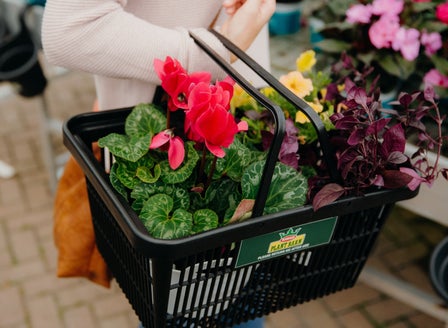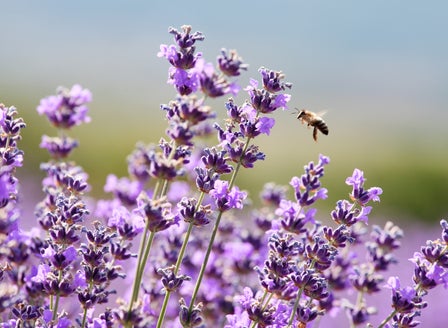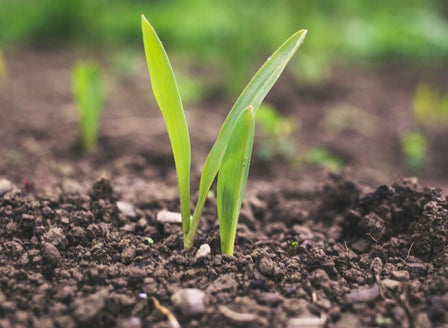Few plants invoke the sense of wonder that one feels when standing under a cherry blossom in full bloom. While found across Asia and Europe most Prunus (Flowering cherries) you see today originate from Japan, where they are the national flower. Flowering in the Spring these plants will be a main feature of any garden in which they’re included.
Planting Calendar
Flowering Cherries are best planted in winter from June to late August.
Prepare
Position
Best planted in a sunny, sheltered part of the garden. In free draining soil that is rich in organic matter. They look great as a feature tree in the garden or in mixed cottage borders. Smaller growing varieties can be grown in large containers.
Soil
When planted into the ground Flowering Cherries like a free draining soil that is rich in organic matter. To improve the organic content in your soil, break up the soil and add Kings Compost and Kings Sheep Pellets then mix together well. When growing in containers, plant into Kings Container mix. This mix contains added water storage crystals and Saturaid, two products that help maintain moisture in the soil.
Plant
Gently tap the plant out of its pot. Dig a hole twice the size of the root ball. Back fill the hole mixing in Kings Compost, Sheep Pellets and Kings Slow Release Rose Food into your soil, so that the top of the plant's roots are level with the surrounding soil. Firm the soil down gently and water in well with Aquaticus Garden Booster In heavier clay soils, where drainage is likely to be an issue, plant into a slight mound and sprinkle Gypsum Clay Breaker into the bottom of the hole, to help slowly condition the soil.
Care
Watering
Watering is essential especially in the first year of planting to allow the roots to get well established. Water slowly allowing the water to sink down into the roots, rather than allowing it to run off the top of the soils surface. Add Saturaid into the soil at planting as this will help channel the water deep down into the root zone. Consider setting up an automatic watering system – these can be simple and inexpensive.
Feeding
Feed with Kings Slow Release Rose Food to encourage flowering. When planted in the ground liquid feed every month with Aquaticus Garden Booster, from Spring through to the end of Autumn, this encourages root growth and increases the microbial activity in the soil. Monthly applications of Kings Sheep Pellets will help with soil conditioning and plant health. If planted into a container feed with Kings Liquid Fast Food along with monthly applications of Aquaticus Organic Garden Booster this encourages strong roots and a healthy immune system.
Spraying
Spray with Yates Lime Sulphur in winter to kill overwintering pests, diseases and to remove Lichen.
Pruning
A light trim after flowering will encourage new growth for next season's flowering, at the same time thin any branches that are crossing each other or rubbing together. Optionally on a dry day in winter you can cut to desired shape or size.
General Care
When using sprays, chemicals or fertilisers always read the label and follow the instructions. Apply sprays in the evening to avoid harming beneficial insects.
Beginner Tip
Remove any new growth that comes up from below the graft.
Tip
Flowering Cherries are available in two forms, weeping and upright with different styles of flowers available in both forms. Both forms should be planted as feature trees or in groups to create a real statement in the garden. Underplanting with spring bulbs will bring even more bright spring colour to the area.
Top Varieties
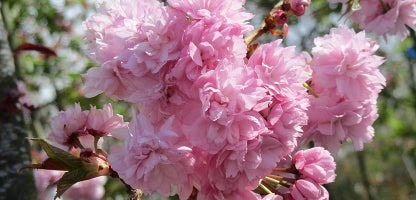
Prunus Kiku-Shidare Sakura
A weeping variety that has double pink flowers with dynamic weeping branches. A real stunner.
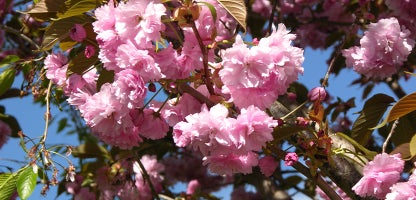
Prunus Shimidzu Sakura
A upright variety that has double white flowers with a pink blush.
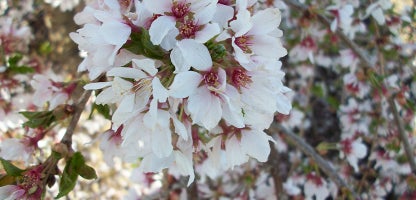
Prunus falling Snow
Single white flowers with draping style branches.
Frequently Asked Questions
When is the best time to plant flowering cherries?
The best time to plant flowering cherries is during the autumn and winter months. This allows the trees to establish roots before the growing season in spring.
How often should I water my flowering cherry tree?
Watering is essential especially in the first year of planting to allow the roots to get well established. Water slowly allowing the water to sink down into the roots, rather than allowing it to run off the top of the soils surface. Add Saturaid into the soil at planting as this will help channel the water deep down into the root zone. Consider setting up an automatic watering system – these can be simple and inexpensive.
Do flowering cherries need to be pruned?
A light trim after flowering will encourage new growth for next season's flowering, at the same time thin any branches that are crossing each other or rubbing together. Optionally on a dry day in winter you can cut to desired shape or size.
Are flowering cherries suitable for small gardens?
Yes, many varieties of flowering cherries are suitable for small gardens. Look for dwarf or compact varieties that fit the space available. They offer beautiful blooms without requiring a large area.
How much sunlight do flowering cherries need?
Flowering cherries thrive in full sunlight. Ensure they receive at least six hours of direct sunlight daily for optimal growth and blooming.
